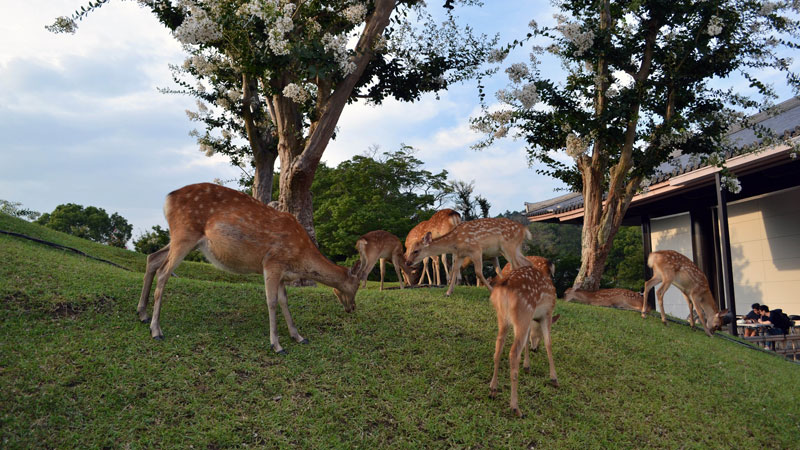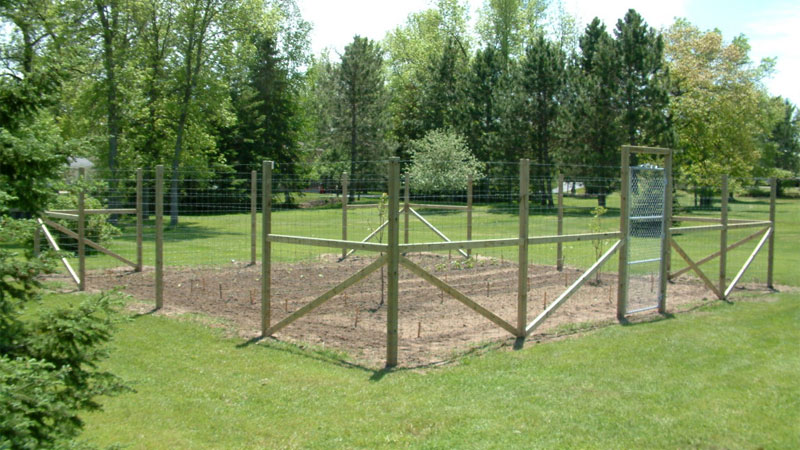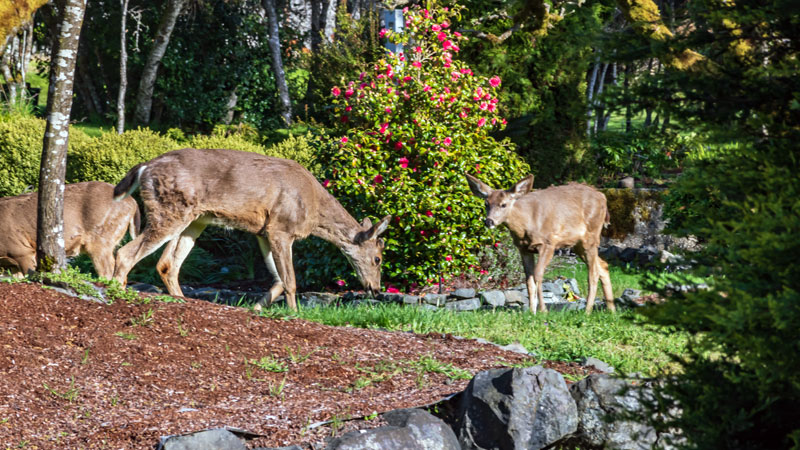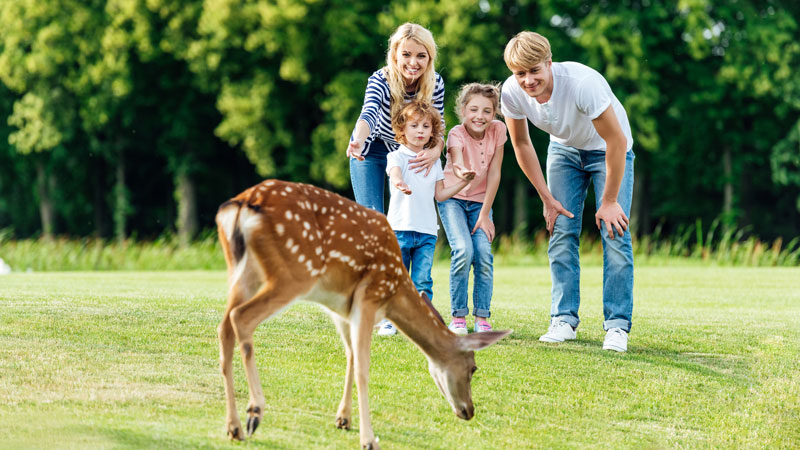Deer are an important critter throughout US history. They’ve provided clothing, bone tools, food, entertainment (Deer and supermarkets are always a laugh), and beauty. Unfortunately, hungry deer can also be a nuisance.
Let’s have a look at these elegant critters and how to get rid of deer. We’ll also discuss ways to keep them out of places they’re not welcome.
Getting to Know Deer
What child’s life hasn’t been ruined by watching Bambi? So much of what you know about deer most likely comes from Vines/TikToks, YouTube, or the countless memes. But the deer problem most homeowners face isn’t funny.
A lack of natural predators means there’s often not enough food to go around, and hungry deer will readily attack your garden beds or lawn.
It’s very possible to live in harmony with local deer, if you’re willing to put some effort in. However, it can take some real dedication to keep deer out of the places you don’t want them when they’re allowed in other places. Understanding deer makes this job a little easier.
Identifying Deer Species
There are over 100 kinds of deer in the world, some of which you probably thought weren’t deer at all. Six species can be found natively in North America, with four living in the US.
White-Tailed Deer
Those living in the Eastern US will almost always encounter the whitetail deer. This species is one of the two most common in the US, and, as the name implies, can be spotted by its tail.
When a whitetail deer raises its tail to expose the white underside, it’s a “talk to the hand” gesture telling predators they’ve been spotted. Whitetails are fairly friendly, and Texas reports over 4 million living in its borders.
Black-Tailed Deer
The black-tailed deer (AKA mule deer, named for their large mule-like ears) are the second most common deer species in the US. They stick to the West Coast, being found only as far east as the westernmost portions of the Great Plans.
As the name implies, their tails have a black underside. It has not yet been confirmed whether a whitetail and black-tail will produce grey-tailed offspring.
Moose
The moose, well known for its size and sturdy antlers, is actually a type of deer. In the US, it’s mostly found in New England, and is the largest member of the Deer family. They’re also known to team up with squirrels to defeat Russian spies.
Elk
Elk, the second largest species of deer, has a far more limited range than it used to enjoy. They’re mostly found in the Western Great Plains and Rocky Mountains, but small populations can still be found as far east as Virginia.
Deer Habitat
There aren’t many places a deer can’t call home. Found on every continent except Antarctica, you’ll most often run into US species in forests, grasslands, or in the Rocky Mountains.
Their spindly legs allow them to climb with unusual grace, and a large percentage of trails in natural parks follow well-worn deer trails.
In rural or urban settings, deer will often take a stroll down the street when it’s quiet, straying from nearby woods in search of food, out of curiosity, or on their way to the next bit of woodland.
What do Deer Eat?
Deer are herbivores with a wide diet that’s sometimes varied by species. Grasses and plants are their favorite foods. However, they’re more than happy to share that pumpkin you left out for Halloween.
When Deer Become Pests
Deer are truly wonderful creatures, but there are two occasions when they certainly aren’t. The first is when they decide your yard and garden is an all-you-can-eat buffet.
Deer damage to your property can be both frustrating and costly. They don’t intend to be malicious, but in a world where ours is growing and theirs is shrinking, it’s an increasingly common problem for a doe to bring her fawn into your yard to eat.
While visiting, they may target individual plants or cause damage by rubbing their antlers against trees. Ornamental plants are often just as attractive to deer as crop plants.
A second, more dangerous pest problem is the presence of ticks and mites. Deer mites (AKA Demodex mites) carry a number of diseases that can pass on to you or your pets. Meanwhile, ticks are a source of Lyme disease and can be very difficult to remove once they latch on for a blood meal. Unlike fleas, the threat of mites isn’t about numbers, it’s about coming into contact with them at all.
How to Get Rid of Deer
There are a wide range of scare tactics and barriers you can use for repelling deer. Unlike many larger critters, traps aren’t a legal option. The only real way to keep deer away is to make your yard or garden unattractive to them.
Here are some simple, yet effective solutions. Be warned, every deer herd is slightly different, as these are intelligent critters with their own personalities. You may need to experiment a little to find the ideal solution for local deer populations.
Keep Deer Out of a Garden
Without some preventative measures, deer can decimate your vegetable garden; munch away at your daffodils, hostas, and pansies; and turn a carefully-tended paradise into a wasteland. Yet there are plenty of plants deer stay away from.
A healthy mix of preventative measures can go a long way to keeping your garden safe.
Selective Planting
When picking out plants, especially shrubs or flowers, do a little research and aim for deer-resistant plants. While not guaranteed, you can also prioritize plants with hairy or prickly stems or wavy foliage.
Deer will usually avoid these as they can be irritants. In some cases, a deer may be hungry enough to carefully eat around the stems, so don’t rely too heavily on this method.
The same goes for heavily aromatic plants. Herb gardens contain a lot of great options that deer dislike. For example, planting some sage or chives among your flowers may help reduce the risk of them getting nibbled on. But just as a starving human will eat out of a garbage can, a starving deer will hold its nose and dive on in.
Of course, when it comes to natural deer control, wise planting is all about making the food unappetizing. You can use a garlic pepper spray (with or without hot peppers) to help protect edible plants.
A Sound Solution
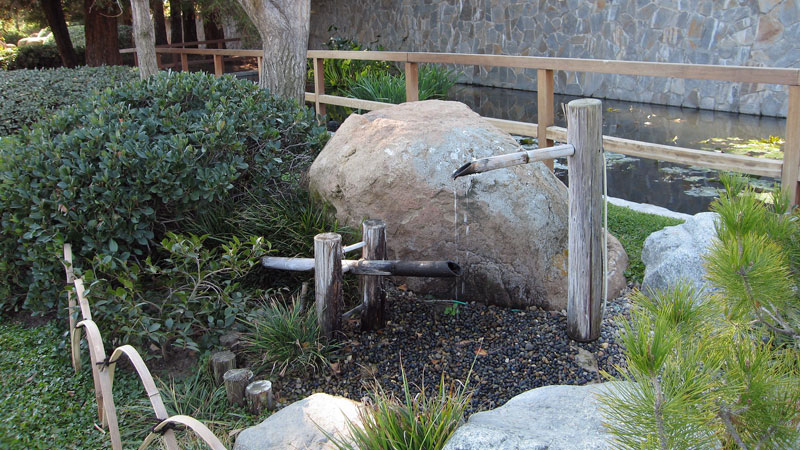
Ahh, the joys of a deer chaser! Often seen in Japanese gardens, the deer chaser is a simple device that serves as a water feature. It creates an almost meditative sound that will scare deer and other critters.
To make one, you will need a water pump, a large stone, and some bamboo. Water is pumped onto a bamboo chute (or the chute is added to an existing water feature). At the end of the chute is a large piece of bamboo, with a pivot added to it.
Bamboo has natural barriers between segments. This barrier should be located past the pivot point on the longer side. Place the pivot 2/3 or further along the pole towards the open end. Water enters the hollow tube and the weight eventually causes the tube to tip and spill out the water.
The tube then swings back, and the long end slams against the rock, creating a loud, hollow thud. A skilled craftsman is able to set the pivot so perfectly that the deer chaser can actually be used to tell time.
Fencing is More than a Sport
When you have flower beds that aren’t deer resistant or fruit trees, the previous methods might not work all that well. A tall fence around the area (eight feet or higher) can make all the difference.
Probably the best option is to use deer netting. This fine black mesh can keep deer out when attached to some sturdy posts. You may wish to attach some colorful ribbons to the netting. This not only helps keep deer from running into them, but may spook other unwanted critters.
When your yard is almost entirely garden space, you can also use the underhanded “double fence” technique. Simply put a fence around four or five feet tall around the yard. Then, add a second fence of similar height about five feet further in.
This method is preferable in urban settings, since many ordinances restrict fence heights. In addition, deer hate feeling trapped and prefer to jump high instead of far, so they’ll avoid all of the tasty plants inside.
Keep Deer Away From Your Yard
Many of the garden techniques will also work for your yard, although they may have variations. For example, you can set up wind chimes on your porch or hang them from trees in the yard.
Much like the deer chaser, chimes produce loud noises that are pleasant to (most) humans but scare deer off. You can also use a decoy or an electronic deer chaser, which provides both light and sound and is effective up to 25 feet away. Just remember, deer aren’t stupid. Urban deer especially will catch on if a decoy remains stationary for too long.
Using a Deer Repellent
Better suited to whole yard defense, deer repellents are generally effective and sometimes work against a range of pests as well. Predator urine crystals are one of the most common types of repellent.
Others, formulated more specifically for deer, include Deer Out and Plantskydd
One very important consideration when using repellents is that they only work when you do. You MUST reapply with an almost religious fervor, and also add new applications after it rains. Failure to keep a rigid application schedule will compromise the effectiveness of a repellent.
Also, be aware there are a lot of ineffective remedies out there people will try to pass off, such as selling you bags of human hair. Another useless folk remedy is to wrap an aromatic bar of soap (such as Irish Spring) in burlap, then hang the soap from trees.
These are about as effective as blindfolding someone in a pitch dark room and asking them how many fingers you’re holding up.
Spray it, Don’t Say it
Sprinklers do more than water your lawn. They can scare away a range of pests. The Orbit 62100 Yard Enforcer Motion Activated Sprinkler is one of our favorite examples of a highly configurable, motion-activated sprinkler system.
You can chain them to cover more range, and they work against a wide variety of critters, from deer to squirrels.
Don’t Whizz on…
When mentioning an electric fence, most people will betray an age range of 25-40 by either picturing the infamous game from Ren & Stimpy or one of those horrific Canadian public service announcements in which they show a child being electrocuted.
In reality, electric fences can give a nasty shock, but the ones sold for residential use aren’t terminal.
You will need to check with local ordinances and may wish to pass on this option if you have children or pets that might come into contact with the fence. You will also need to maintain the area around the fence, weeding it and making sure any cords or solar collectors are kept in working order.
Ways to Coexist with Deer
Sometimes you want to enjoy deer passing though your yard, but don’t want them eating your flowers. Thankfully, there are ways to protect precious plants without having to keep deer out completely.
Consider using methods to specifically protect sensitive areas of your property using fencing or similar methods, while placing deer-friendly things in parts of your yard where you can enjoy their company. These may include deer-friendly plants, hanging salt licks, or other beneficial objects.
You can also enjoy deer by providing salt licks or other beneficial treats in nearby woods so they won’t feel the need to leave their yard and visit yours.
Be aware that treats may also attract other unwanted critters, so always leave them high above ground where raccoons or other pests can’t get to them (this is a good idea even if providing the treats somewhere other than your property). Also note that pregnant does deer shouldn’t hang out with cattle.
Never forget that deer can be very sweet and gentle, but they can also be dangerous. When spooked, deer have been known to accidentally injure people by kicking or headbutting them. There is also a risk of ticks or fleas when coming in contact, so be sure to use caution during close encounters.
- How to Get Rid of Hawks - March 8, 2024
- How to Get Rid of Pill Bugs (Rolly Pollies) - March 1, 2024
- How to Get Rid of Groundhogs (Woodchucks) - February 5, 2024

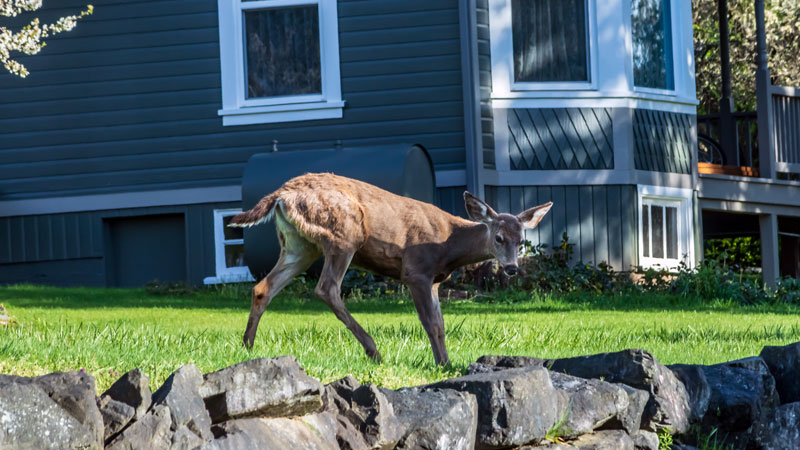
 Just tell me how to get rid of ’em.
Just tell me how to get rid of ’em.
